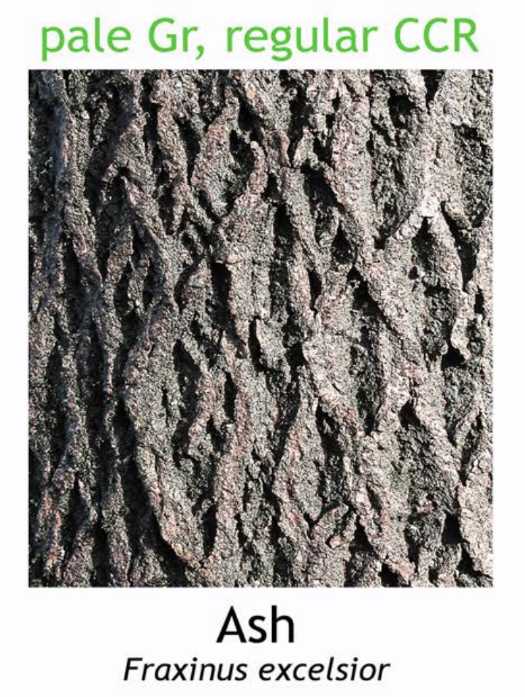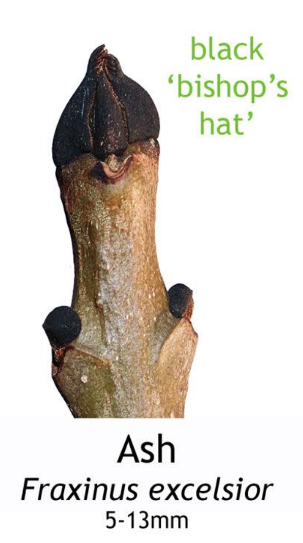A common and important native tree species in Ireland.
Recognising the Ash Tree:
-
Leaves: The leaves of the Ash tree are compound and composed of 5-11 leaflets arranged oppositely along the stem. Each leaflet is elongated with serrated margins and a pointed tip.
-
Bark: Young Ash trees have smooth, grey bark that becomes rougher and develops diamond-shaped patterns as they mature.
-
Seeds: Ash trees produce distinctive seeds known as "keys" or "helicopters." These seeds are flat, elongated, and attached to a central stalk, enabling them to spin and flutter like helicopters as they fall.
-
Habitat: Ash trees are found in a variety of habitats, including woodlands, hedgerows, and parks, and they are particularly common in moist, fertile soils.
-
Size: Mature Ash trees can reach heights of up to 30-40 meters, with a straight trunk and a broad, spreading crown.



5 Interesting Facts about the Ash Tree:
-
Historical and Mythological Significance: Ash trees have held cultural significance in various mythologies and folklore. In Norse mythology, the World Tree, Yggdrasil, is believed to be an Ash tree. In Celtic mythology, the Ash tree was associated with wisdom and protection.
-
Tough and Flexible Wood: Ash wood is valued for its strength, flexibility, and shock-absorbing properties. It has been historically used for making tools, sports equipment (such as baseball bats and hockey sticks), furniture, and flooring.
-
Ash Dieback Disease: Unfortunately, Ash trees in Ireland and throughout Europe are currently facing a significant threat from a fungal disease called Ash Dieback (Hymenoscyphus fraxineus). This disease can lead to dieback of branches, crown thinning, and ultimately the death of the tree.
-
Wildlife Habitat: Ash trees support a diverse range of wildlife species. Birds, such as woodpeckers and owls, nest in their cavities, while insects, including butterflies and beetles, feed on their leaves and bark.
-
Leaf Emergence: Ash trees are one of the last trees to produce leaves in spring and one of the first to shed them in autumn. This late leaf emergence allows more sunlight to reach the forest floor, promoting the growth of understory plants.
Uses of the Ash Tree:
-
Wood Products: Ash wood is highly valued for its strength, flexibility, and attractive grain pattern. It is used in a wide range of applications, including furniture making, flooring, cabinetry, tool handles, sports equipment, and musical instruments.
-
Medicinal Purposes: Various parts of the Ash tree, including the bark and leaves, have been used in traditional medicine for their anti-inflammatory and diuretic properties. However, it's essential to consult a healthcare professional before using any plant-based remedies.
-
Ecological Restoration: Ash trees play a crucial role in reforestation and ecological restoration projects, particularly in riparian areas and woodlands. Their rapid growth and ability to thrive in diverse soil conditions make them valuable for stabilising soil, preventing erosion, and enhancing biodiversity.
Contribution to Biodiversity:
-
Habitat Provider: Ash trees support a wide range of plant and animal species, contributing to overall biodiversity in ecosystems where they are present. Their dense foliage provides shelter and nesting sites for birds and small mammals.
-
Food Source: The seeds of Ash trees are consumed by various bird species, including finches and thrushes, as well as small mammals. Insects feed on the leaves and bark, further supporting the food web within forest ecosystems.
-
Soil Improvement: Ash trees have deep root systems that help improve soil structure and fertility. Their leaf litter decomposes rapidly, adding organic matter to the soil and supporting nutrient cycling processes.
In summary, the Ash tree is not only recognisable by its distinctive leaves, bark, and seeds but also holds cultural significance, provides valuable wood products, and contributes to biodiversity and ecosystem health in Ireland's woodlands and other habitats. However, the threat of Ash Dieback disease underscores the importance of conservation efforts to protect this iconic tree species.
Images taken from the beautiful posters created by Phil Barnett and you can download these and/or purchase other great designs from his online shop.
